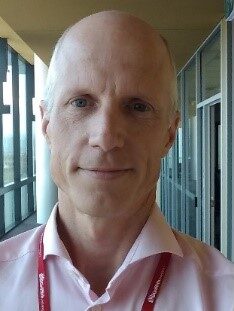Seth Blumsack is a part of a multi-university team that is studying the decision-making process that governs how people in the U.S. receive electricity.
Image: Adobe Stock
A Penn State researcher is a part of a multi-university team that received a $513,000 grant to study the decision-making process that governs how people in the U.S. receive electricity. Seth Blumsack, professor in the , is co-leading an interdisciplinary team investigating how the rules for the power grid are made and how they affect the real world.
“Electricity is the platform for our economy and is tightly connected to people’s well-being,” said Blumsack, a cofunded faculty member in the , who has been studying the electric power industry for more than 20 years. “These rules that govern the grid are critical elements for changing the way we produce electricity.”
According to Blumsack, the rules have important implications for the grid and society, such as grid reliability, cost to customers, environmental impact and technology.
“The rules are not always very kind to new technology,” he said. “This is one of the reasons that adoption of new technology has not been as rapid as it could be.”
A prime area of interest for Blumsack is investigating who creates the rules.
“Many of these rules are not made by government officials,” said Blumsack. “Instead, they are made by organizations that are connected to running the grid, including utilities, energy generation companies, wind and solar developers and banks. So, you have solar developers voting on rules that will affect coal plants and vice versa.”
These rules are created under the umbrella of Regional Transmission Organizations (RTO), which Blumsack calls “the most important organizations that nobody understands.” He considers the whole system to be an ambiguous quasi-democratic process.
A map of Regional Transmission Organizations (RTOs) and similar organization in North America.
“Nobody understands what RTOs do. Nobody understands how they make decisions,” he said. “The more I look at it, the more it looks like our Electoral College. We use essentially the same system to make rules about how much wind and solar power we can put on the grid, for example, or how much we are willing to pay for a reliable power grid, as we do to elect our president.”
According to the , more than two-thirds of all electricity consumed in the U.S. is associated with RTOs or similar organizations.
There are important questions that need to be answered, said Blumsack, including who has political power during these processes and how much of a voice does each entity have.
“What is the role for the state of Pennsylvania in how the PJM [the RTO in Pennsylvania] power grid is run or the grid of the future? Right now, it’s very limited,” he said. “Pennsylvania can try to influence the RTO rule-making process indirectly or can turn to federal regulators or the courts if it doesn’t like particular outcomes. But unlike in other RTO footprints, Pennsylvania as a state doesn’t have a strong role.”
Blumsack’s research team is the only organized group to be studying this rule-making process in a systematic manner, he said. That is one of the reasons he and his team were asked to go to Washington, D.C., in the fall of 2019 to brief Congressional members of the U.S. Energy and Commerce Committee and the U.S. Committee on Energy and Natural Resources on their research.
Blumsack said he views his role as a professor at major research institute like Penn State to be a serious social obligation.
“I have a responsibility to educate students as well as to educate and engage with stakeholders as much as I can,” he said. “Because I am doing work on an important industry, I spend a lot of time with utilities and industry professionals, regulators and policymakers, from local to federal. I think those interactions are important because they provide clarity on what questions are important and relevant.”
In addition to Blumsack, the researchers include the project’s principle investigator Kate Konschnik, as well as Jennifer Chen and Brian Murray, of Duke University; Lincoln Davies of the Ohio State University; and Stephanie Lenhart of Boise State University.
Support for this research was provided by grants from the Alfred P. Sloan Foundation and Heising-Simons Foundation.








